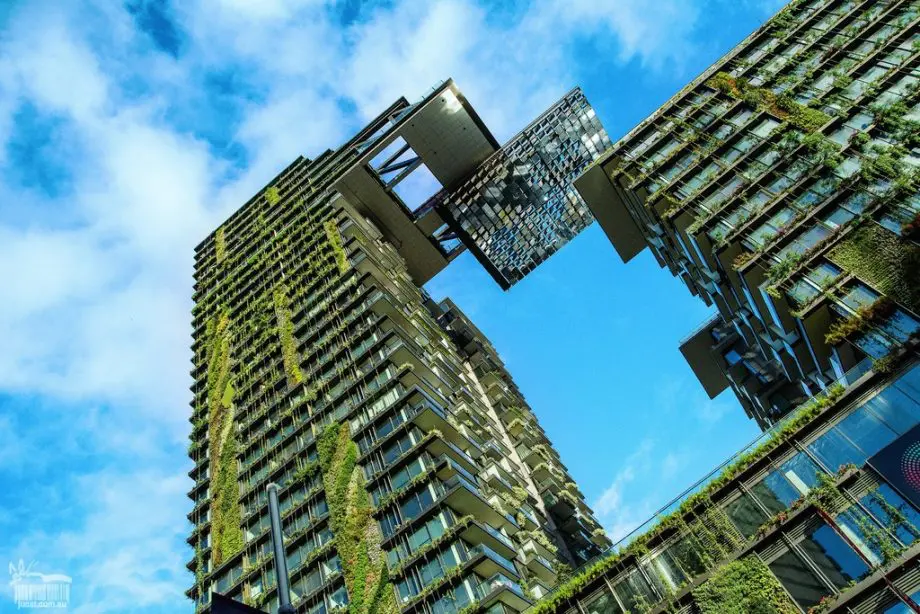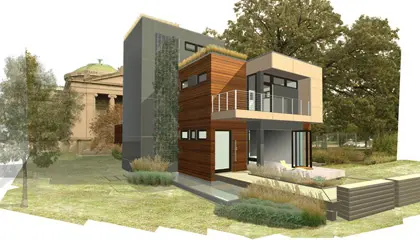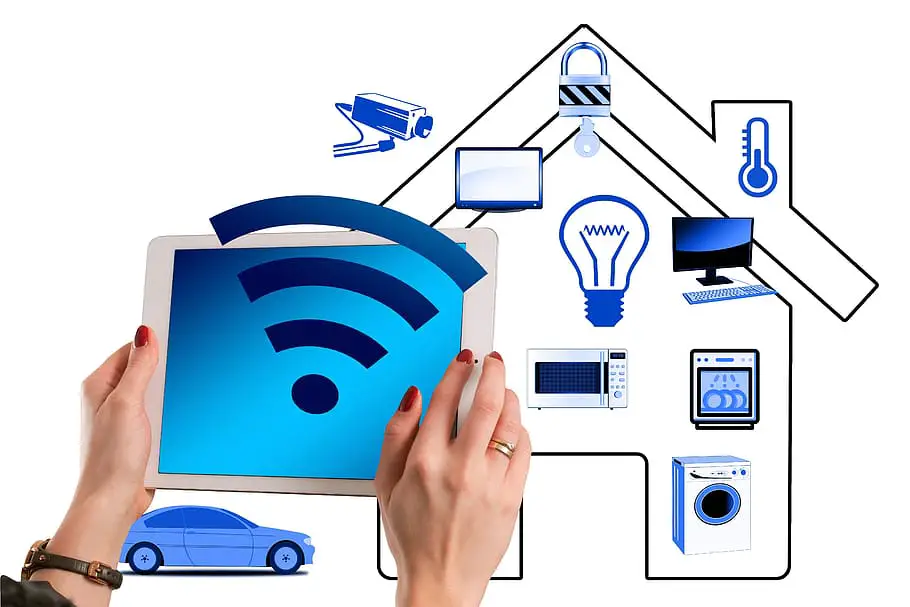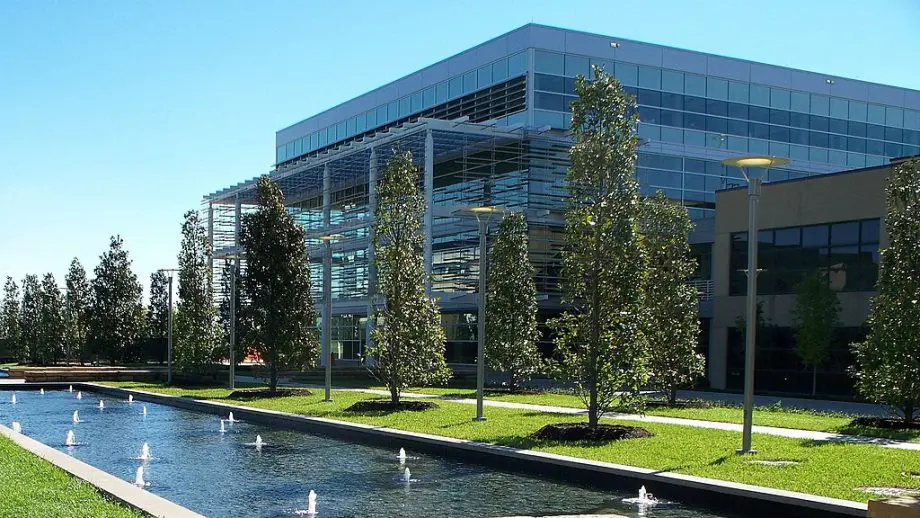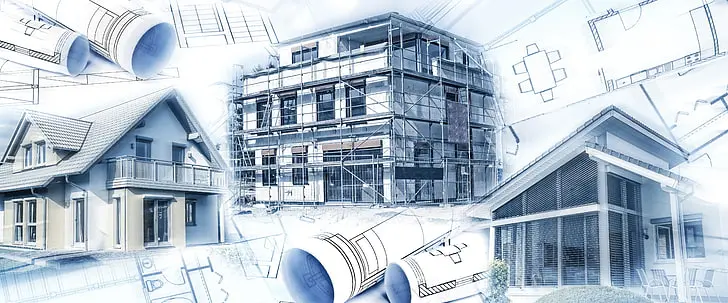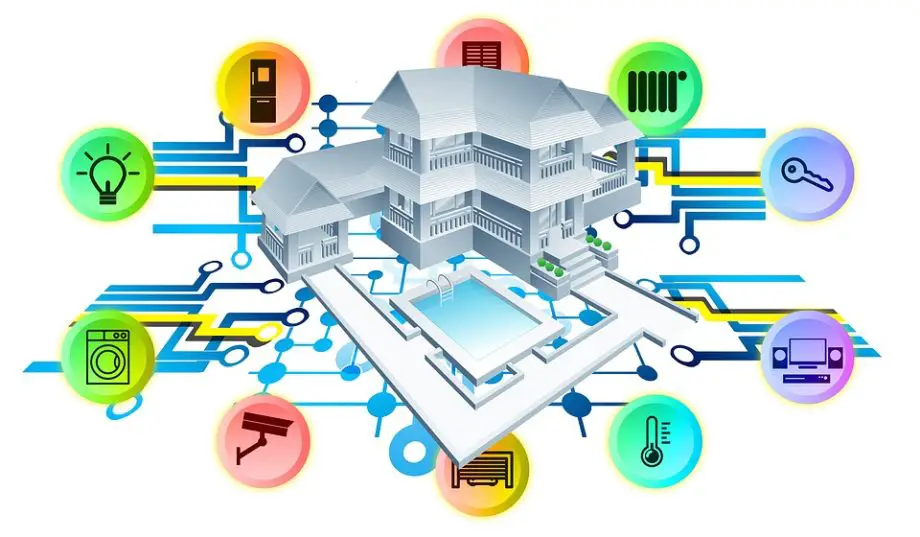
Are green homes and smart homes the same? Dive into our blog post as we explore the similarities, differences, and the exciting future of sustainable living.
Are green homes and smart homes the same? It’s a question that’s been buzzing around lately as we all become more conscious of our environmental footprint.
In this post, we’re going to delve into the world of green and smart homes, unraveling their similarities, and differences, and how they’re shaping the future of our living spaces.
So, grab a cup of your favorite brew, get comfy, and let’s embark on this enlightening journey together!
Are Green Homes and Smart Homes the Same?
Are green homes and smart homes the same? This question might have crossed your mind as you navigate the evolving landscape of home technology and sustainability.
We’re going to explore this intriguing topic in depth. We’ll delve into the definitions of green and smart homes, trace their evolution, compare their features, and even look at some real-world examples.
We’ll also discuss the benefits these homes offer and what the future holds for them.
Plus, we’ll tackle some frequently asked questions to clear up any lingering confusion.
So, sit back, relax, and let’s dive into the fascinating world of green and smart homes!
Definition of Green Homes
When we talk about green homes, what comes to mind? Well, green homes are all about sustainability and efficiency.
They are designed with an emphasis on reducing environmental impact.
This means they are built using environmentally friendly materials and practices, including the use of renewable resources and minimizing waste.
But it’s not just about the construction. Green homes also focus on energy efficiency, with features like solar power panels, energy-efficient appliances, and superior insulation.
They aim to reduce energy consumption, lower carbon emissions, and even save homeowners money on utility bills. It’s like giving a high-five to Mother Nature every day!
A green home is a type of house designed to be environmentally sustainable. Green homes focus on the efficient use of “energy, water, and building materials”.[1] A green home may use sustainably sourced, environmentally friendly, and/or recycled building materials. It may include sustainable energy sources such as solar or geothermal, and be sited to take maximum advantage of natural features such as sunlight and tree cover to improve energy efficiency. https://en.wikipedia.org/wiki/Green_home
Definition of Smart Homes
Now, let’s switch gears and talk about smart homes.
Picture this: you’re on your way home from a long day at work, and with just a few taps on your smartphone, your home starts to prepare for your arrival.
The lights turn on, the thermostat adjusts to your preferred temperature, and your favorite playlist starts playing.
Sounds like something out of a sci-fi movie, right? But that’s what smart homes are all about!
A smart home is a residence that uses internet-connected smart devices to enable the remote monitoring and management of appliances and systems.
This could include lighting, heating, entertainment systems, and even security. It’s all about convenience, efficiency, and, let’s be honest, feeling a bit like you’re living in the future!
Home automation or domotics is building automation for a home. A home automation system will monitor and/or control home attributes such as lighting, climate, entertainment systems, and appliances. It may also include home security such as access control and alarm systems.
The phrase smart home refers to home automation devices that have internet access. Home automation, a broader category, includes any device that can be monitored or controlled via wireless radio signals, not just those having internet access. When connected with the Internet, home sensors and activation devices are an important constituent of the Internet of Things (“IoT”). https://en.wikipedia.org/wiki/Home_automation
The Evolution of Green and Smart Homes
Let’s take a step back in time, shall we? The concepts of green homes and smart homes didn’t just appear out of thin air.
They’ve been evolving over the years, shaped by technological advancements and our growing awareness of environmental issues.
In this section, we’re going to journey through the history of green and smart homes, tracing their roots and seeing how they’ve grown to become the buzzwords they are today.
So, buckle up and get ready for a fascinating trip down memory lane!
History of Green Homes
The concept of green homes isn’t as new as you might think. In fact, it’s been around for decades!
The roots of green homes can be traced back to the 1970s, during the energy crisis.
People started to realize that we couldn’t keep using resources at the current rate, and so the idea of energy-efficient homes was born.
Over the years, this idea has evolved and expanded. Today, green homes are not just about energy efficiency, but also about using sustainable materials, reducing waste, and minimizing the overall environmental impact.
From solar panels and rainwater harvesting systems to natural insulation and eco-friendly building materials, green homes have come a long way.
And with the growing awareness about climate change and sustainability, they’re only going to become more prevalent!
History of Smart Homes
Now, let’s talk about smart homes. The idea of a home that can automate tasks and respond to our commands might seem like something out of a futuristic movie, but the seeds of this concept were actually planted back in the 1960s.
The home of the future was a popular theme at world fairs and in science fiction, with predictions of homes that could do everything from cooking dinner to cleaning the house.
Fast forward to the 1990s and early 2000s, and we started to see some of these ideas become reality, with the advent of home automation systems.
But it was really the explosion of the Internet and the development of the Internet of Things (IoT) in the 2010s that took smart homes to the next level.
Today, we have homes that can be controlled with a smartphone or voice commands, learning our preferences and automating tasks to make our lives easier and more efficient.
Smart light bulbs are internet-connected lighting devices that offer enhanced control and functionality compared to traditional bulbs.
They can be remotely controlled via a smartphone or smart home system, allowing you to adjust brightness, change colors, and set schedules for when the lights turn on or off.
Some can even interact with other smart devices in your home, offering a level of convenience and customization that goes beyond traditional lighting solutions.
It’s safe to say that the smart homes of today have far surpassed the imaginations of those early visionaries!
Features of Green Homes vs. Smart Homes

Alright, now that we’ve got a handle on what green homes and smart homes are and where they came from, let’s dive into the nitty-gritty.
What makes a home ‘green’ or ‘smart’? What features set them apart?
In this section, we’re going to take a closer look at the unique characteristics of both green and smart homes.
From energy-efficient appliances to automated lighting systems, we’ll explore the elements that make these homes stand out.
So, let’s roll up our sleeves and get into the details!
Top Features of Green Homes
Green homes are like the champions of the housing world, doing their part to protect the environment with their eco-friendly features.
One of the key features of green homes is energy efficiency. This could be through solar panels that harness the power of the sun, or energy-efficient appliances that do the same job while using less electricity.
Then there’s superior insulation, which keeps the home warm in winter and cool in summer without over-relying on heating or air conditioning.
But it’s not just about energy costs. Green homes also focus on water efficiency, with features like low-flow fixtures and rainwater harvesting systems.
And let’s not forget about the materials used in the construction of the home.
Green homes often use sustainable, locally-sourced materials to reduce their environmental impact, unlike a traditional home.
Top Features of Smart Homes
On the other hand, smart homes are like the tech wizards of the housing world.
They’re all about using technology to make our lives more convenient and efficient.
One of the key features of smart homes is home automation. This could be as simple as lights that turn on and off automatically, or as complex as a home security system that can be monitored and controlled from your smartphone.
Smart homes also often feature smart thermostats, which learn your schedule and preferences to optimize heating and cooling efficiency.
Then there are the smart home entertainment systems, which can stream your favorite music or movies on command.
And of course, many smart homes feature smart appliances, from refrigerators that can tell you when you’re out of milk, to ovens that can be preheated on your way home from work.
It’s like having a personal assistant right in your home!
The Intersection of Green and Smart Homes
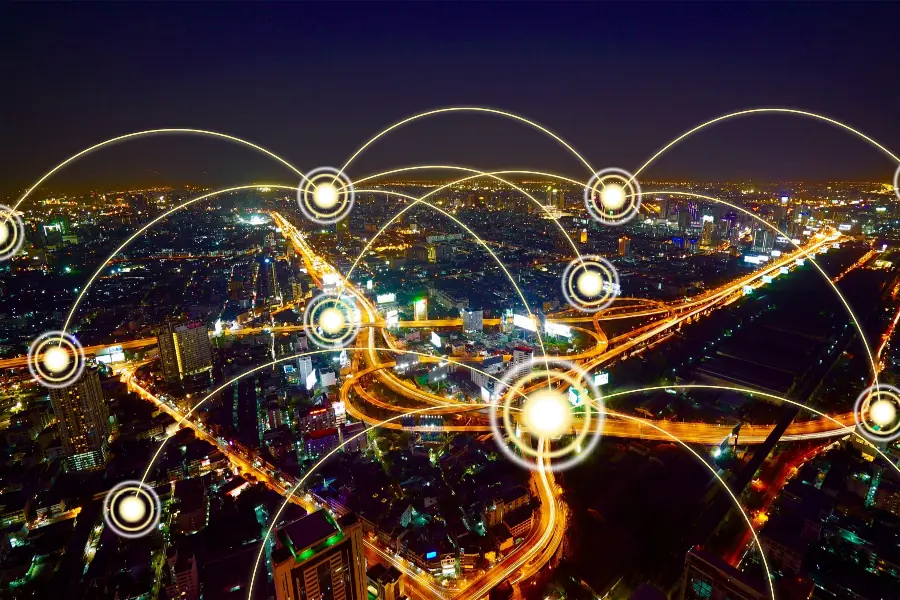
Now that we’ve explored the unique features of both green and smart homes, you might be wondering: is there a place where these two concepts intersect?
Can a home be both green and smart? Well, you’re in for a treat because that’s exactly what we’re going to explore in this section.
We’ll look at how the principles of a sustainable home can enhance smart home technology, and how smart features can contribute to a home’s green credentials.
So, let’s dive into this exciting crossroads of technology and sustainability!
How Smart Homes can be Green
Smart homes and green homes might seem like two different worlds, but they can actually complement each other quite nicely.
How so? Well, many of the features that make a home ‘smart’ can also contribute to its ‘greenness’.
For instance, smart thermostats can optimize your home’s heating and cooling efficiency, reducing energy consumption and making your home greener.
Similarly, smart lighting systems can automatically adjust the lighting based on the time of day or occupancy, saving electricity.
Even smart appliances can contribute to a home’s green credentials by optimizing their operation and reducing energy waste.
So, while a smart home might be all about convenience and technology, it can also play a significant role in reducing our environmental footprint.
How Green Homes can be Smart
On the flip side, green homes can also incorporate smart features to enhance their sustainability.
For example, a green home might use a smart irrigation system that waters the garden based on weather forecasts and soil moisture levels, reducing water waste.
Or it might have solar panels that not only generate renewable energy but also use smart technology to optimize their output and feed excess power back into the grid.
Even the use of smart materials in construction can contribute to a home’s smartness, such as windows that automatically adjust their tint based on sunlight levels to regulate the home’s temperature.
So, while a green home is primarily about sustainability and reducing environmental impact, it can also leverage smart technology to achieve these goals more effectively.
Benefits of Green and Smart Homes
By now, you might be thinking, ‘Green homes and smart homes sound great, but what’s in it for me?’
Well, that’s exactly what we’re going to explore in this section!
Both green and smart homes come with a host of benefits, from environmental to economic to technological.
Whether you’re a tech enthusiast, an eco-warrior, or just someone looking to make life a little easier, there’s something for everyone.
So, let’s dive in and discover the many perks of living in a green or smart home!
Environmental Benefits
First and foremost, both green and smart homes offer significant environmental benefits.
Green homes, with their focus on energy efficiency and sustainable materials, can greatly reduce your carbon footprint.
They help conserve resources, reduce waste, and contribute to a healthier planet.
But smart homes also have a part to play. By optimizing energy usage and reducing waste, smart homes can also contribute to environmental sustainability.
So, whether you choose a green home, a smart home, or a combination of both, you’ll be doing your part to protect our planet.
Technological Benefits
Next up, let’s talk about the technological benefits.
Smart homes, with their automated systems and internet-connected smart home devices, offer a level of convenience and efficiency that’s hard to beat.
From controlling your home’s lighting and temperature with your smartphone to having a home security system that keeps you safe, the technological benefits of smart homes are vast.
And while green homes might not seem as tech-savvy, many incorporate smart technologies to enhance their energy efficiency and sustainability. So, you get the best of both worlds!
Economic Benefits
Last but certainly not least, green and smart homes can also offer economic benefits.
Green homes can save you money on your utility bills through their energy and water conservation.
Plus, with the growing demand for sustainable homes, they can also hold their value better and even command a premium in the real estate market.
On the other hand, smart homes can also lead to cost savings through efficient use of utilities and can increase home value due to the high demand for smart technology in homes.
So, while there might be an upfront investment, the long-term economic benefits of green and smart homes can be significant.
Case Studies
Alright, we’ve talked a lot about green homes and smart homes in theory, but what about in practice?
In this section, we’re going to look at some real-world examples of green and smart homes.
We’ll explore how these concepts have been applied in real life and the impact they’ve had.
From homes that seamlessly blend sustainability and technology, to innovative projects that are pushing the boundaries of what’s possible, these case studies will bring the concepts of green and smart homes to life.
So, let’s dive in and see these homes in action!
Examples of Green Smart Homes
One great example of a smart green home is the ZEB Pilot House in Norway.
This house is a marvel of green and smart design. It’s a net-zero energy building, meaning it produces as much energy as it consumes, thanks to features like solar panels and energy-efficient appliances.
But it’s also a smart home, with automated systems for lighting, heating, and security.
The result is friendly homes that are not only sustainable but also incredibly convenient and comfortable to live in.
Another example is the Green Life Smart Life project in Rhode Island, USA. This home was designed to showcase how high-tech living and eco-friendly design can go hand in hand. It features energy-efficient appliances, a home automation system, and even a rainwater collection system for watering the garden. It’s a great example of how green and smart features can be integrated into a stylish, modern home.
Evolution of Smart Homes in the Building Industry
The building industry has seen a significant shift towards smart homes in recent years.
One notable example is the rise of smart neighborhoods. For instance, the Pecan District in Texas, USA, is a planned community that will feature smart technology in every home, including smart thermostats, security systems, and even electric vehicle charging stations.
Another example is the Bosch Smart Home initiative in Germany.
Bosch has been working with builders to incorporate smart home technology right from the construction phase.
This includes everything from smart heating systems to connected appliances, demonstrating how the building industry is evolving to meet the demand for smart homes.
These examples show that the integration of green and smart features in homes is not just a concept, but a reality that’s being embraced around the world.
The Future of Green and Smart Homes
Having journeyed through the history, features, and real-world examples of green and smart homes, it’s time to turn our gaze toward the horizon.
What does the future hold for these innovative living spaces? How will they continue to evolve in response to technological advancements and environmental challenges?
In this section, we’re going to explore the exciting future of green and smart homes.
From emerging trends to bold predictions, we’ll delve into what’s next in this dynamic field.
So, let’s fasten our seatbelts and set off on this journey into the future!
Predictions for the Future
As we look toward the future, one prediction is that green and smart homes will become increasingly intertwined.
As technology continues to advance, we can expect to see more smart features designed with sustainability in mind, from energy-efficient smart appliances to smart systems that optimize water usage.
Another prediction is that green and smart homes will become the norm rather than the exception.
As awareness of environmental issues continues to grow, and as smart technology becomes more accessible, more and more people will choose homes that are both green and smart.
Finally, we can expect to see more innovation in the design and construction of green and smart homes.
From new sustainable materials to advanced smart home systems, the homes of the future will be even more efficient, convenient, and sustainable than those of today.
Technological Advancements to Look For
In terms of technological advancements, there are several exciting trends to watch out for.
One is the rise of AI and machine learning in smart homes. These technologies can learn from your habits and preferences to optimize your home’s energy usage and make your life more convenient.
Another trend is the integration of renewable energy sources into smart homes.
For instance, we might see more smart homes equipped with solar panels and smart batteries, which can store excess energy for later use.
Finally, we can expect to see more advancements in smart home security.
From facial recognition to advanced motion sensors, the smart homes of the future will not only be more efficient and sustainable, but also safer.
So, as we look towards the future, there’s a lot to be excited about in the world of green and smart homes!
FAQs
We’ve covered a lot of ground in this post, but you might still have a few questions lingering in your mind. And you’re not alone!
There are several common questions that people often ask when it comes to green and smart homes.
In this section, we’re going to tackle some of these FAQs head-on. From the cost implications to the practicalities of green and smart living, we’ve got you covered.
So, let’s dive into these questions and clear up any confusion!
Q: Are all smart homes green?
A: Not necessarily. While smart homes often have features that can contribute to energy efficiency, they aren’t inherently green. A smart home becomes green when its smart features are used to reduce its environmental impact, such as by optimizing energy usage or reducing waste.
Q: Can a green home be made smart?
A: Absolutely! Many features of green homes, like energy-efficient appliances or a solar system, can be enhanced with smart home system technology.
For example, a smart thermostat can optimize a home’s heating and cooling system, making a green home even greener.
So yes a green smart home is not only possible but becoming increasingly more popular.
Q: What are the costs associated with green and smart homes?
A: The costs can vary widely depending on the features and technologies involved.
While there can be an upfront investment in green and smart features, these costs can often be offset by long-term energy savings on your energy bills, and in some cases, increased property value.
Q: What is a green and smart house?
A: A green and smart house is a home that combines the principles of green homes (sustainability, energy efficiency, reduced environmental impact) with the technology of smart homes (automation, remote control, connectivity).
The result is a home that’s not only environmentally friendly but also convenient and efficient.
Q: What is considered a smart home?
A: A smart home is a residence that uses internet-connected devices to enable the remote monitoring and management of appliances and systems.
This could include lighting, heating, entertainment systems, and even security.
Q: What is considered a green home?
A: A green home is a house that is designed to be environmentally friendly and sustainable.
This could involve using sustainable building materials, optimizing energy efficiency, reducing waste, and minimizing the home’s overall environmental impact.
Q: What is the difference between a smart home and a normal home?
A: The main difference lies in the level of automation and connectivity.
A smart home uses technology to automate tasks and allow remote control of various systems and appliances, making life more convenient and efficient.
A normal home, on the other hand, doesn’t have these smart features.
Conclusion
Well, we’ve certainly covered a lot of ground in this post!
From the definitions of green and smart homes to their history, features, benefits, and even some real-world examples, we’ve explored these concepts from every angle.
But as we reach the end of our journey, it’s time to tie everything together and reflect on what we’ve learned.
In this concluding section, we’ll recap the key points and share some final thoughts on the fascinating world of green and smart homes.
So, let’s take a moment to look back on our journey and see how far we’ve come!
Recap of Key Points
We started our journey by defining what green and smart homes are.
Green homes focus on sustainability and reducing environmental impact, with features like energy-efficient appliances, superior insulation, and sustainable materials.
Smart homes, on the other hand, use technology to make our lives more convenient and efficient, with features like home automation, smart thermostats, and connected appliances.
We then explored the history of these concepts, seeing how they’ve evolved over the years and how they’ve come to intersect in many ways.
We delved into the unique features of green and smart homes and saw how these features offer a host of benefits, from environmental to technological to economic.
We also looked at some real-world examples of green and smart homes and made some predictions about the future of these innovative living spaces.
And finally, we tackled some common FAQs, clearing up any lingering confusion.
Final Thoughts
As we wrap up, it’s clear that green and smart homes are more than just buzzwords.
They represent a significant shift in how we think about our living spaces, prioritizing sustainability, efficiency, and convenience.
Whether you’re considering a green home, a smart home, or a combination of both, there’s no denying the appeal of these innovative concepts.
But perhaps the most exciting thing is that this is just the beginning.
With ongoing advancements in technology and a growing awareness of environmental issues, the future of green and smart homes is bright.
So, whether you’re a homeowner, a builder, or just someone interested in the future of housing, there’s a lot to look forward to!





